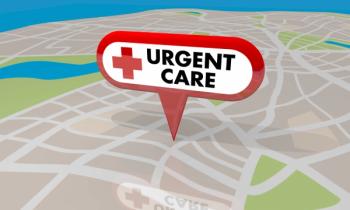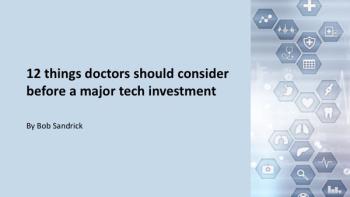
Doctors can use the psychological techniques of deep listening and emotional validation to help patients feel heard and understood.

Doctors can use the psychological techniques of deep listening and emotional validation to help patients feel heard and understood.

If you’re feeling burned out, here are some steps to take control and move beyond burnout.

Medical billing and collection is a broken system with far-reaching negative consequences-it’s about time we got down to fixing it.

Tell us if you think Medicare for all would improve patient care in the United States.

When staff are fully engaged in their work and feel empowered to do it, they can meet and even exceed performance targets.

Routinely evaluating patients’ needs in the increasingly on-demand approach to healthcare is critical to success.

Overcoming obesity is a daunting goal, especially when patients hear that carrying too much weight is becoming a societal norm in some places. This list should give PCPs useful guidance as they communicate with obese or at-risk patients about effective ways to trim down.

Pilot program offers 25 quarterly questions in lieu of 10-year test.

Independent primary care providers, a cornerstone of our healthcare system, are key to the success of this national paradigm shift to value-based care.


The responsibility for both diagnosing and managing patients with dementia often falls largely on the primary care physician.

A patient satisfaction survey can help you build a satisfying and cohesive experience for patients – if you can get patients to take it.

The occasional negative patient complaint online can actually turn out to be a good thing for your reputation.

Many physicians may not realize the extent to which both Medicare and private insurers have already implemented value-based care compensation models.

Is investing in cryptocurrency something to avoid or are physicians missing out on a prime investment opportunity if they don’t give it a try?

Not every practice has value, nor does every seller try to sell their practice properly.

As successful patient management expands to meet digital and lifestyle engagement needs and care continuity demands, technology should enable the transition without adding administrative burden.

When it comes to telemedicine services, the primary factor affecting reimbursements is legal policy.

Physicians can benefit from technology as much if not more than other professionals, but physicians can get overwhelmed trying to figure out what kind of technology is best for them.

Despite the benefits of telehealth to consumers, laws designed to protect state healthcare providers and patients often stand in the way.

Healthcare providers show strong interest in population health management but often struggle to assess the financial impact of the change from fee-for-service to the value-based reimbursement models that accompany it.

The conditions in which people live, learn, work, and play that can affect a wide range of health risks and outcomes.

On this Labor Day holiday, don’t forget about the hardworking physicians and nurses who provide quality care each and every day.

This face-to-face encounter enables physicians and other staff to get to know a candidate in ways that go beyond a resume on a desk and letters of recommendation.

What to consider before investing-and what it takes to win.